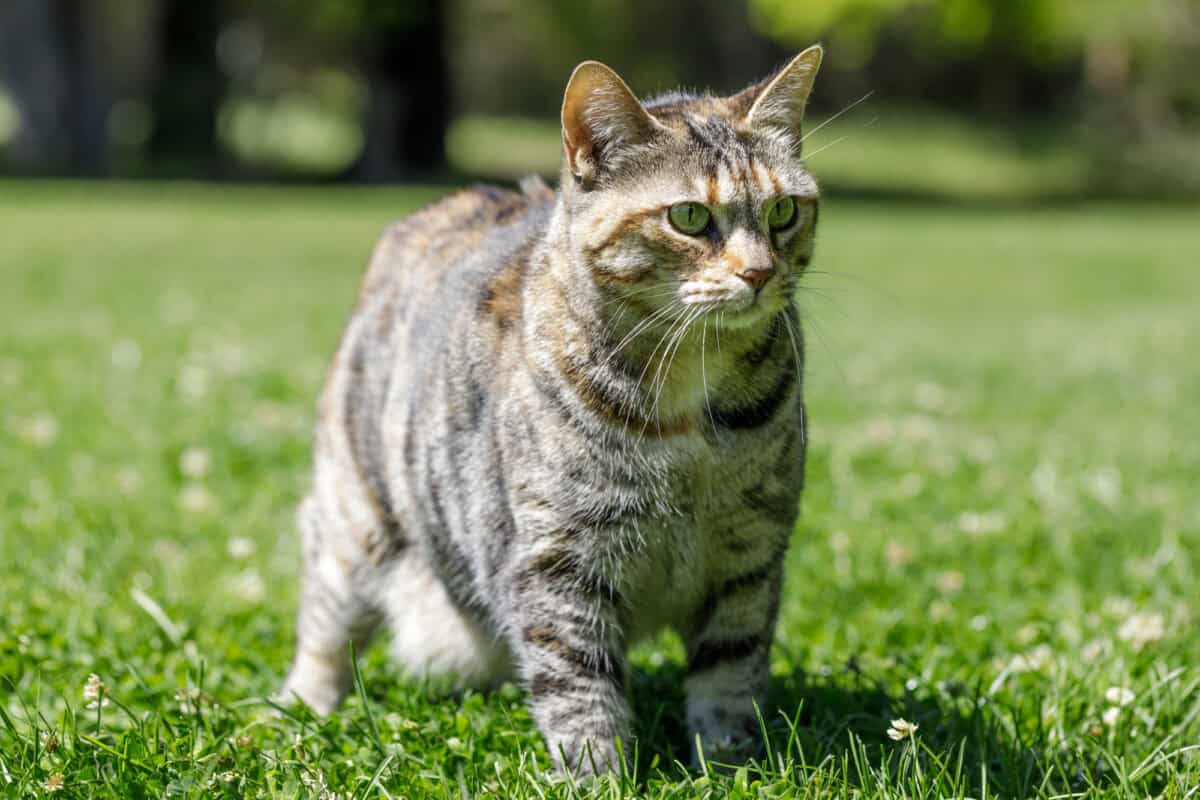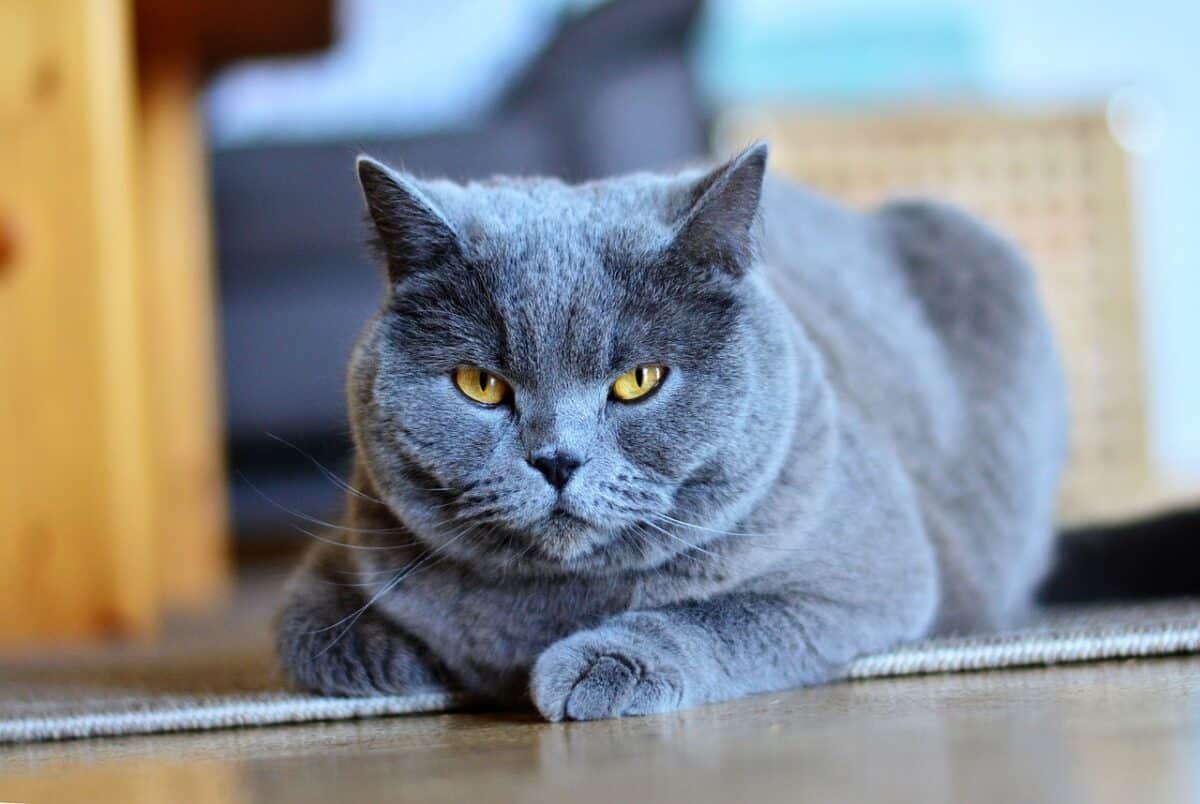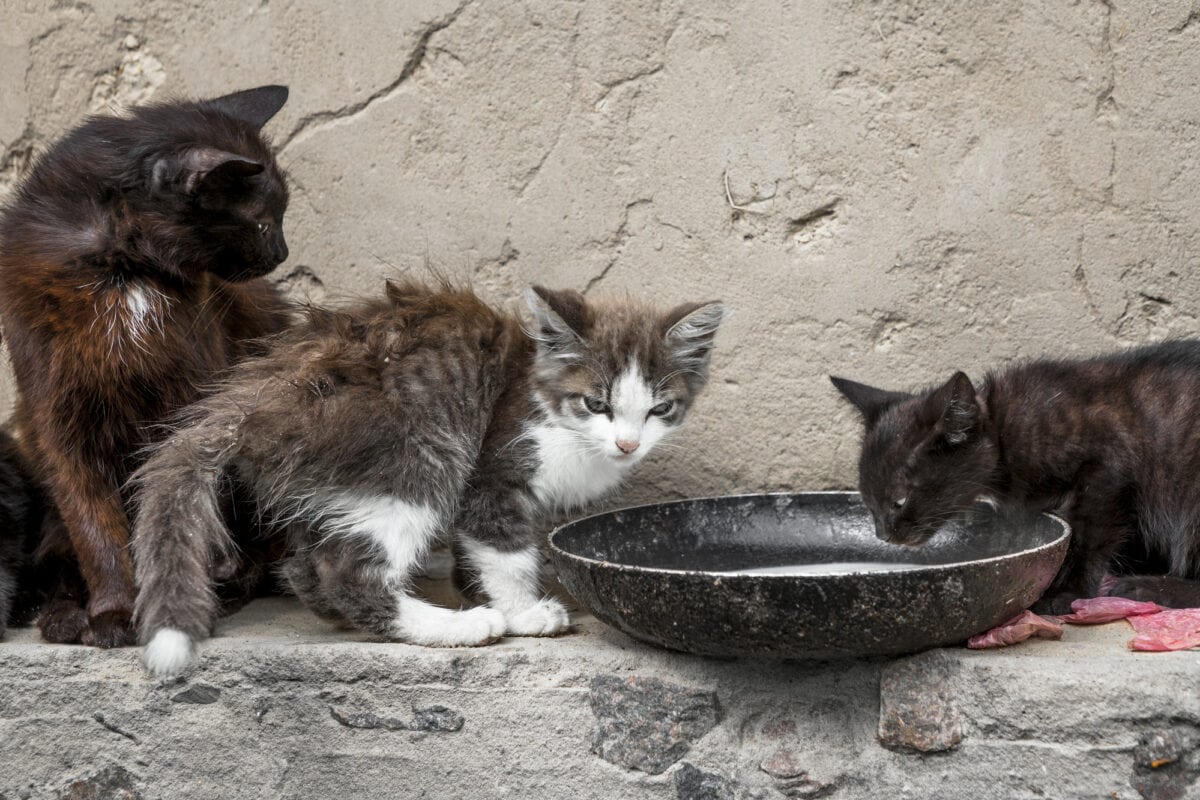Cats, those enigmatic companions that grace our homes with their presence, are known for their peculiar behaviors that often leave us both amused and bewildered. From midnight zoomies to elaborate grooming rituals, our feline friends have a repertoire of quirks that make them uniquely lovable. While many of these behaviors might seem strange to us, they’re perfectly normal in the feline world. However, it’s crucial for cat parents to distinguish between harmless eccentricities and signs that something might be amiss. In this comprehensive guide, we’ll explore ten delightfully quirky cat behaviors that showcase their fascinating nature, plus three important signals that your cat might be experiencing discomfort or distress.
The Midnight Zoomies Phenomenon

If you’ve ever been startled awake by your cat racing through the house at 3 AM like they’re competing in the Cat Olympics, you’ve witnessed the famous “zoomies.” This sudden burst of energy, officially known as Frenetic Random Activity Periods (FRAPs), is completely normal feline behavior. Cats are crepuscular by nature, meaning they’re most active during dawn and dusk, which explains why they often choose the wee hours of the morning for their impromptu sprinting sessions.
These high-energy episodes serve several purposes in your cat’s life. They’re a way to release pent-up energy, particularly for indoor cats who may not get as much physical activity as their outdoor counterparts. The zoomies also have evolutionary roots—in the wild, cats would be most active hunting during twilight hours when their prey is active but visibility still gives them an advantage. While midnight zoomies might disrupt your sleep, they’re a sign of a healthy, energetic cat expressing their natural instincts. If you’d prefer more peaceful nights, try engaging your cat in active play sessions before bedtime to help burn off that excess energy.
The Curious Case of Kneading

That rhythmic pushing of paws against soft surfaces—often accompanied by purring and a blissful expression—is one of the most endearing cat behaviors. Known as “kneading” or “making biscuits,” this behavior begins in kittenhood when nursing kittens knead their mother’s belly to stimulate milk flow. The fact that adult cats continue this behavior throughout their lives speaks to how deeply ingrained it is in their psyche. When your cat kneads your lap, a pillow, or a blanket, they’re expressing contentment and comfort that harkens back to their earliest days.
Kneading also serves practical purposes in the feline world. Wild cats knead grassy areas to create a comfortable spot for resting or giving birth. There’s also evidence suggesting that cats have scent glands in their paw pads, so kneading might be a way of marking territory with their unique scent. While those sharp claws can make kneading a somewhat painful expression of affection, it’s best not to discourage this natural behavior. Instead, keep your cat’s claws trimmed or place a thick blanket on your lap to create a buffer between their enthusiastic paws and your sensitive skin.
The Gifting of “Presents”

Finding a dead mouse or bird at your doorstep might not be your idea of a thoughtful gift, but in your cat’s mind, they’re presenting you with a valuable offering. This hunting behavior, even in well-fed domestic cats, stems from their instinctual predatory nature. Female cats in particular often bring prey items to their human family members, much as they would teach their kittens hunting skills in the wild. Your cat isn’t being cruel—they’re actually demonstrating affection and trying to contribute to the family “pride” by sharing their hunting success.
For indoor cats who don’t have access to live prey, this gifting behavior might manifest in bringing you toy mice or other playthings instead. Some cats even vocalize with a distinctive “hunting cry” while carrying their “prey” to announce their success. While finding dead creatures isn’t pleasant, remember that your cat is following deep-seated instincts and, in their own way, showing care for you. If you have an outdoor cat who frequently brings unwanted gifts, consider a brightly colored collar with a bell that can alert potential prey to your cat’s presence, reducing their hunting success rate.
The Art of Chattering

Have you ever noticed your cat sitting by the window, intently watching birds outside while making rapid, chattering sounds with their jaw? This distinctive behavior, often accompanied by an unusual vocalization that’s neither a meow nor a purr, is known as chattering or chittering. The sound varies between cats but typically includes a combination of clicks, chirps, and quiet staccato sounds. This peculiar behavior has puzzled cat behaviorists for years, but several theories exist about its purpose.
One theory suggests that chattering represents a combination of excitement and frustration when cats spot prey they cannot reach—the feline equivalent of “so close, yet so far.” Another fascinating hypothesis proposes that cats might be attempting to mimic the sound of their prey to lure them closer, similar to how some hunters use calls. Some research even indicates that the unusual jaw movements during chattering resemble the specialized “killing bite” that cats use to break the necks of their prey. Whatever the exact cause, chattering offers a fascinating glimpse into your cat’s predatory instincts and provides a window into their wild ancestry, even as they sit comfortably on your windowsill.
The Curious Box Obsession

The internet is filled with images of cats of all sizes squeezing themselves into boxes that seem impossibly small, prompting the well-known saying, “If it fits, I sits.” This universal feline fascination with boxes is more than just an adorable quirk—it’s rooted in your cat’s psychology and survival instincts. Boxes provide enclosed, defensible spaces where cats feel protected and secure. In the wild, such enclosed spaces would offer safety from predators and an advantageous position for observing prey.
Beyond security, boxes offer thermal insulation, which appeals to cats who naturally prefer temperatures between 86-97°F (30-36°C), significantly warmer than most human homes. Studies have even shown that shelter cats provided with boxes to hide in show lower stress levels and adapt to new environments more quickly than those without boxes. This explains why your new cat might spend days hiding in a cardboard box before venturing out to explore their surroundings. Rather than discarding those online shopping boxes immediately, consider leaving them out for a few days as enrichment for your feline friend—they’re essentially free cat toys that provide comfort, security, and entertainment all in one simple package.
The Slow Blink Communication

When your cat looks at you with half-closed eyes and slowly blinks, they’re not just tired—they’re actually communicating with you in a profound way. Often called a “cat kiss” or “love blink,” this subtle gesture is one of the most genuine displays of feline affection. In cat body language, staring can be interpreted as threatening or challenging, while averting the gaze or closing the eyes indicates trust and vulnerability. When your cat offers you a slow blink, they’re essentially saying, “I feel safe enough with you to close my eyes in your presence.”
This fascinating form of non-verbal communication has been studied by feline behaviorists who confirm that the slow blink represents a positive emotional state and is often used in peaceful, relaxed interactions between cats and trusted humans. You can respond in kind by returning the slow blink, which many cats recognize and appreciate. Research has even shown that humans who slow-blink at unfamiliar cats are more likely to receive slow blinks in return and may have more success in approaching these cats than those who maintain direct eye contact. This simple exchange represents one of the most beautiful aspects of the human-cat bond—a quiet conversation of mutual trust and affection conducted entirely without words.
The Mysterious Catnip Response

The sight of a dignified cat rolling ecstatically in catnip, rubbing their face in it, and possibly drooling or leaping about is both amusing and intriguing. This reaction is caused by nepetalactone, a compound in catnip (Nepeta cataria) that binds to receptors in a cat’s nasal tissue and triggers a response in the brain. Interestingly, the ability to respond to catnip is hereditary, with approximately 50-70% of cats showing sensitivity to it. The reaction typically lasts for about 10-15 minutes, after which cats become temporarily immune to its effects for about an hour.
While it may resemble intoxication, the catnip response is actually more similar to how cats react to natural pheromones. Some scientists believe it mimics feline sexual pheromones, which explains the rolling, rubbing, and euphoric behavior. Despite its intensity, catnip is non-addictive and completely safe for cats. Beyond being recreational, catnip can have practical benefits: it can reduce anxiety, encourage exercise through play, and even serve as a training tool to direct cats toward appropriate scratching surfaces. If your cat doesn’t respond to catnip, don’t worry—you might try alternatives like silver vine, valerian root, or honeysuckle, which can produce similar reactions in cats who are genetically “catnip immune.”
The Peculiar Pre-Jump Calculations

Watch a cat preparing to jump onto a high surface, and you’ll notice something fascinating—they appear to be making complex calculations before takeoff. This isn’t just anthropomorphizing; cats actually do perform a kind of mental mathematics before leaping. They assess the height, distance, and stability of their target, often wiggling their hindquarters to position themselves perfectly. This pre-jump ritual isn’t just adorable; it’s a crucial part of their impressive jumping mechanics.
Cats have evolved as natural athletes with anatomy perfectly designed for leaping. Their powerful hind legs contain specialized fast-twitch muscle fibers that store energy like coiled springs. The wiggling motion helps them position these legs at the optimal angle for takeoff while their keen depth perception allows them to gauge distances with remarkable accuracy. A healthy adult cat can jump up to six times their body length horizontally and about three times their height vertically—proportionally outperforming many Olympic athletes. This extraordinary ability evolved as an essential hunting skill and remains even in domestic cats who might only use it to reach the top of the refrigerator where you’ve hidden their treats. The next time you see your cat in “calculation mode” before a jump, appreciate the complex biomechanics and evolutionary adaptations at work in that seemingly simple movement.
The Curious Habit of Face Rubbing

When your cat rubs their face against your legs, furniture corners, or other objects in your home, they’re doing more than just showing affection—they’re engaging in “bunting,” a behavior that serves several important purposes in feline communication. Cats have scent glands located around their faces, particularly on their cheeks, chin, and forehead. When they rub these areas against objects or people, they’re depositing their unique scent markers, essentially “claiming” everything they touch as part of their territory.
This scent-marking serves as a complex form of communication in the feline world. When directed at humans, face rubbing combines territorial marking with social bonding—your cat is simultaneously claiming you as “theirs” and creating a communal group scent that provides comfort and security. In multi-cat households, you might notice cats rubbing against each other’s faces, which helps establish group identity and maintain social harmony. The intensity and frequency of face rubbing often increases when cats are feeling particularly affectionate or when they’re seeking attention. So the next time your cat insistently rubs against your ankles while you’re preparing dinner, understand that it’s not just a plea for food—it’s also their way of maintaining their scent profile on their favorite human and reinforcing your bond.
The Perplexing “Elevator Butt” Response

Pet owners are often amused when stroking their cat’s back results in the distinctive posture known colloquially as “elevator butt”—where the cat raises its hindquarters high in the air while lowering its front end. This peculiar but normal reaction occurs because the area at the base of the tail is packed with sensitive nerve endings that create pleasurable sensations when stimulated. For many cats, this spot is particularly responsive to touch, creating an almost reflexive elevation response.
The behavior has its origins in kittenhood and mother-kitten interactions. When mother cats groom their kittens, they often focus on the base of the tail and genital area, which stimulates the kittens to eliminate waste—a necessary function for very young kittens who cannot eliminate without stimulation. While adult cats don’t need this assistance, the neural pathways established in kittenhood remain, explaining why many cats continue to raise their hindquarters when petted in this area. The response varies significantly between individual cats, with some barely reacting while others dramatically elevate their posterior at the slightest touch. If your cat enjoys this type of petting, it’s perfectly fine to indulge them—it’s simply another quirky aspect of feline physiology and behavior that strengthens the bond between cats and their human companions.
Signs of Discomfort Excessive Grooming

While cats are naturally fastidious creatures that might spend up to 50% of their waking hours grooming, excessive grooming that leads to bald patches, skin irritation, or raw areas signals a problem requiring attention. This behavior, known as psychogenic alopecia or overgrooming, often serves as a coping mechanism for anxiety, stress, or physical discomfort. The repetitive action of grooming releases endorphins that temporarily soothe the cat, creating a cycle similar to human compulsive behaviors. Common triggers include environmental changes, new pets or family members, moving to a new home, or even rearranging furniture.
Physical causes like allergies, parasites, skin infections, or pain from conditions like arthritis can also prompt overgrooming, as cats attempt to soothe irritated areas. Pay attention to the location of overgrooming—cats with bladder issues might excessively groom their abdominal area, while those with joint pain might focus on a particular limb. If you notice your cat developing bald spots or spending unusually long periods grooming the same area, a veterinary consultation is essential to rule out medical causes. Treatment may include addressing underlying health issues, environmental modifications to reduce stress, pheromone diffusers, and in some cases, behavioral medications. Early intervention is crucial, as overgrooming can become a self-reinforcing habit that persists even after the original trigger is resolved.
Signs of Discomfort Inappropriate Elimination

When a previously litter-trained cat begins urinating or defecating outside the litter box, it’s rarely an act of spite or defiance—despite how it might feel to the frustrated owner. This change in behavior is often one of the most reliable indicators that something is wrong, either physically or psychologically. Medical issues like urinary tract infections, bladder stones, kidney disease, diabetes, or gastrointestinal problems can make using the litter box painful or urgent, causing cats to associate the box with discomfort and seek alternative locations. Older cats may develop arthritis that makes climbing into high-sided boxes difficult, leading to accidents outside the box.
Psychological factors can be equally influential. Stress from household changes, conflicts with other pets, or anxiety can trigger inappropriate elimination. Environmental issues with the litter box itself—such as infrequent cleaning, undesirable litter type, poor location, or insufficient number of boxes—may also contribute to the problem. The rule of thumb is one box per cat plus one extra, placed in quiet, accessible locations. If your cat’s bathroom habits change, a veterinary exam should be your first step to rule out medical causes. Once health issues are addressed, behavioral interventions might include changing litter type, providing additional boxes, using enzymatic cleaners on soiled areas, and addressing sources of stress in the environment. Punishing the cat is counterproductive and will likely increase anxiety, potentially worsening the problem.
Conclusion:

Cats are endlessly fascinating creatures, known for their quirky behaviors that often amuse and puzzle their human companions. Whether it’s the rhythmic kneading of a blanket, the sudden zoomies at midnight, or the gentle head-butts of affection, these habits are often rooted in instinct, comfort, or communication. Understanding these actions not only deepens the bond between cats and their owners but also highlights the unique personalities that make each cat so lovable and entertaining.
However, not all behaviors are harmless or endearing. Certain actions—such as excessive hiding, sudden aggression, or changes in grooming habits—can signal discomfort, stress, or even medical issues. It’s essential for cat owners to be observant and responsive when these warning signs appear. By recognizing the difference between quirky and concerning behaviors, owners can provide timely care and create a safer, more supportive environment where their feline friends can truly thrive.
- 14 Animals That Remember People for Life Even After Years Apart - August 23, 2025
- 10 Biggest Eyes in the Animal Kingdom - August 23, 2025
- The Most Surprising Prehistoric Fossil Found in the US - August 23, 2025

